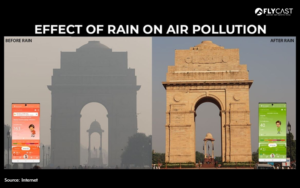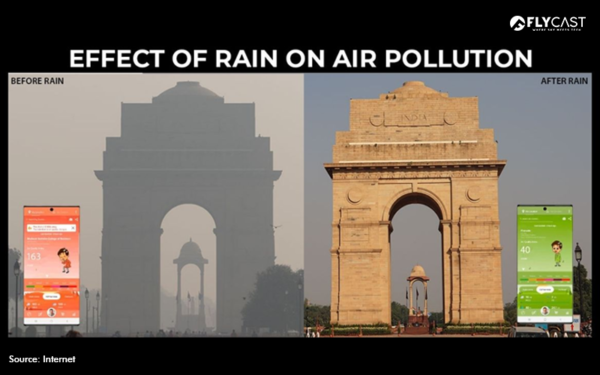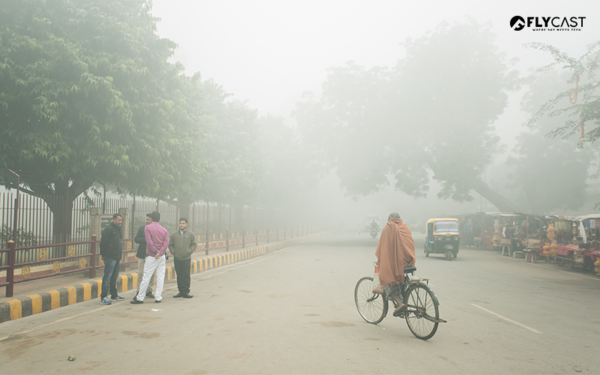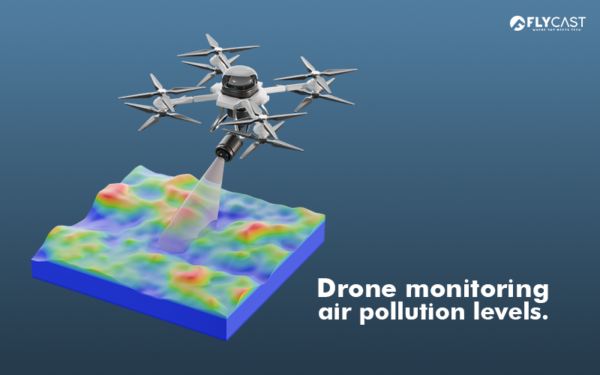

Every year, Delhi pollution becomes a global concern as the city faces one of the worst air quality levels in the world. With AQI levels often crossing 400 during the winter, thick smog covers the skyline, reducing visibility and causing severe respiratory issues for millions of people.
The causes behind Delhi pollution are multifaceted — vehicular emissions, stubble burning, industrial waste, and construction dust all contribute to the toxic air. Despite various initiatives like construction bans and vehicle restrictions, the results remain temporary.
To tackle this escalating environmental emergency, authorities and researchers are now turning toward drone technology and cloud seeding in Delhi as innovative solutions to combat smog and improve air quality.

Cloud seeding is a weather modification technique where materials such as silver iodide or sodium chloride are dispersed into clouds to induce rainfall. The resulting artificial rain in Delhi can help wash away suspended pollutants, temporarily improving air quality.
The Delhi government, in collaboration with IIT Kanpur, has proposed conducting artificial rain through cloud seeding in Delhi to reduce pollution levels during peak smog periods.
However, cloud seeding using conventional aircraft is expensive and logistically complex. This is where drone technology is revolutionizing the approach.

Modern commercial drones are transforming how cloud seeding operations are conducted. Using precise GPS control, weather sensors, and AI-based automation, drones can effectively deliver cloud-seeding materials into specific cloud formations. Check out our FPV drone equipments.
Unlike traditional aircraft, cloud seeding drones can operate at multiple altitudes, navigating precisely to areas with higher humidity. This ensures that artificial rain in Delhi occurs where it’s most needed, improving efficiency and reducing operational waste.
Equipped with sensors that measure temperature, humidity, and wind patterns, drones for cloud seeding analyze real-time data to determine optimal dispersal patterns. The automation ensures that every operation is targeted and data-driven.
Drone-based cloud seeding costs a fraction of conventional aerial operations. Reduced manpower, minimal fuel usage, and easy deployment make drone technology a scalable and sustainable solution for pollution control initiatives. According to the Central Pollution Control Board India, Delhi’s air quality has consistently remained in the ‘poor’ to ‘severe’ category during winter months.
At the heart of every cloud seeding drone is a reliable payload dropping system. Payload Dropping Drones are designed to carry and release seeding agents like silver iodide or salt particles at specific altitudes.
Flycast’s Payload Dropping Drones are engineered with precision payload deployment mechanisms, making them ideal for:
These payload drones can be customized to handle multiple modules, ensuring controlled and consistent material release throughout a single flight.
As Delhi pollution continues to rise, drones with payload dropping technology are proving to be vital tools for environmental restoration and air purification.
Explore Flycast’s Payload Dropping Drones: Payload Dropping Drones by Flycast
The collaboration between IIT Kanpur and the Delhi government could mark a new beginning in India’s environmental management strategy. If successful, artificial rain in Delhi using payload drones might become a repeatable model for other cities struggling with severe pollution.
Beyond Delhi, drone technology could play a major role in weather modification, agriculture, and disaster response — helping India transition toward smarter, greener, and more sustainable cities.

Drone technology enables real-time monitoring of pollutants like PM2.5 and PM10, capturing data from locations beyond the reach of fixed monitoring stations.
FPV drones can survey industrial areas, construction zones, and agricultural fields to identify pollution sources and ensure environmental compliance.
Drones are invaluable for post-disaster assessments — from floods to fires — helping authorities respond swiftly and effectively.
Each of these applications shows how drones in India are reshaping not only industries but also public health and environmental resilience.
At Flycast, we design advanced UAVs that empower real-world solutions. Our payload dropping drones are built for precision, efficiency, and reliability — making them perfect for cloud seeding, pollution control, and agricultural operations.
As India continues to face challenges like Delhi pollution, Flycast remains committed to developing drone technologies that help create cleaner skies and a sustainable future.
What is cloud seeding and how does it help reduce pollution?
Cloud seeding is a process of dispersing particles like silver iodide into clouds to trigger rainfall. The rain helps settle dust and pollutants, improving air quality temporarily.
Can drones be used for cloud seeding in Delhi?
Yes. Drones with payload-dropping systems can release seeding agents into specific cloud zones with precision, making the process safer and more cost-effective.
What are payload dropping drones?
Payload dropping drones are UAVs designed to carry and release materials (like chemicals, water, or relief supplies) accurately during flight — perfect for cloud seeding, agriculture, and rescue missions.
Is artificial rain a permanent solution to Delhi’s pollution?
No. Artificial rain provides temporary relief, but long-term solutions require emission control, green policies, and sustainable technologies.
How is Flycast contributing to drone-based environmental innovation?
Flycast provides advanced commercial and payload drones that can be customized for environmental applications, including air quality monitoring and cloud seeding operations.
+91 9147372485 +91 9147372487
Plot no: 220 and 221 Area: Nazirabad,
Hadia West Bengal 700150